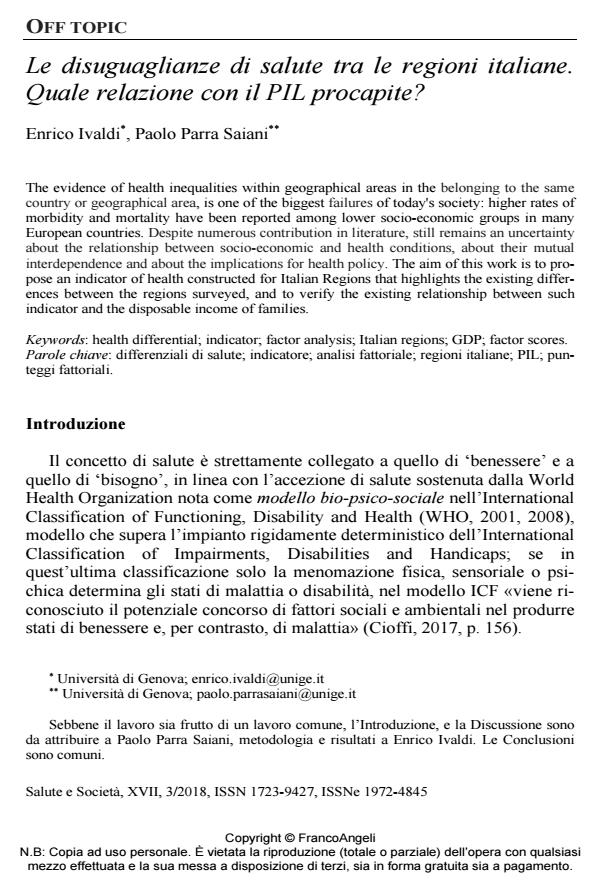Le disuguaglianze di salute tra le regioni italiane. Quale relazione con il PIL procapite?
Journal title SALUTE E SOCIETÀ
Author/s Enrico Ivaldi, Paolo Parra Saiani
Publishing Year 2018 Issue 2018/3
Language Italian Pages 14 P. 137-150 File size 179 KB
DOI 10.3280/SES2018-003010
DOI is like a bar code for intellectual property: to have more infomation
click here
Below, you can see the article first page
If you want to buy this article in PDF format, you can do it, following the instructions to buy download credits

FrancoAngeli is member of Publishers International Linking Association, Inc (PILA), a not-for-profit association which run the CrossRef service enabling links to and from online scholarly content.
The evidence of health inequalities within geographical areas in the belonging to the same country or geographical area, is one of the biggest failures of today's society: higher rates of morbidity and mortality have been reported among lower socio-economic groups in many European countries. Despite numerous contribution in literature, still remains an uncertainty about the relationship between socio-economic and health conditions, about their mutual interdependence and about the implications for health policy. The aim of this work is to pro-pose an indicator of health constructed for Italian Regions that highlights the existing differ-ences between the regions surveyed, and to verify the existing relationship between such indicator and the disposable income of families. i
Keywords: Health differential; indicator; factor analysis; Italian regions; GDP; factor scores.
Enrico Ivaldi, Paolo Parra Saiani, Le disuguaglianze di salute tra le regioni italiane. Quale relazione con il PIL procapite? in "SALUTE E SOCIETÀ" 3/2018, pp 137-150, DOI: 10.3280/SES2018-003010